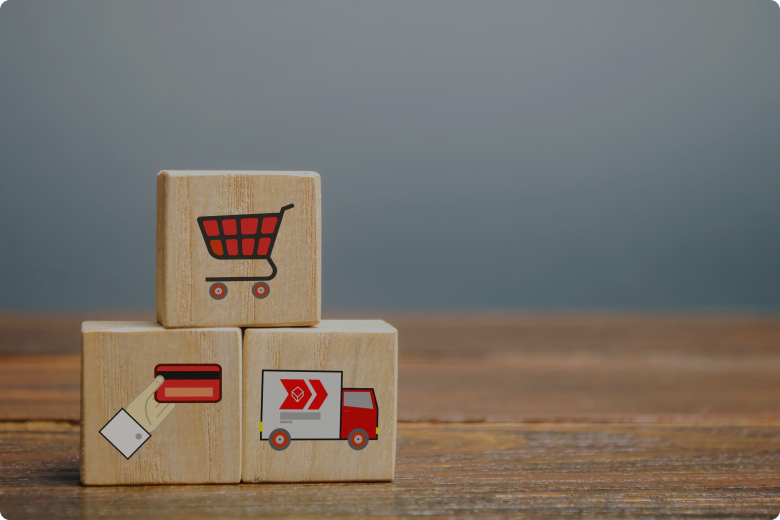Getting Started with Shopify: A Beginner's Guide

Are you contemplating launching your products or services online? Perhaps you're eager to establish a direct connection with your target audience but feel overwhelmed by the prospect of navigating the digital landscape. In the contemporary business landscape, e-commerce has evolved into a thriving global phenomenon, presenting businesses of all sizes with unparalleled opportunities for growth and success.
Whether you're a seasoned retailer looking to transition your brick-and-mortar store into the digital realm or an aspiring entrepreneur embarking on your first online venture, the world of e-commerce holds immense promise and potential. By leveraging innovative technologies, strategic marketing tactics, and a customer-centric approach, businesses can establish a formidable online presence and carve out a competitive edge in today's dynamic marketplace.
However, embarking on the e-commerce journey can be daunting, especially for those unfamiliar with the intricacies of online retailing. From setting up an e-commerce website and optimizing product listings to implementing secure payment gateways and devising effective marketing strategies, there are myriad factors to consider and challenges to overcome.
In this blog, we will explore one such e-commerce platform - Shopify. Shopify is a user-friendly e-commerce platform that helps small businesses create and manage online stores. We will explore the following -
Introduction to Shopify
Shopify is a robust and versatile e-commerce platform designed to simplify the process of building, managing, and scaling online stores. Launched in 2006, it has since become a global leader, powering over a million businesses.
Shopify's user-friendly interface and powerful features make it easy for anyone to set up an online store, even with no technical expertise. With Shopify, you can customize your store's design, manage your products and inventory, process orders, and track sales from one platform.
Shopify also offers a range of tools and features to help you grow your online business, including marketing and SEO tools, analytics, and integrations with popular third-party apps and services. Whether you're just starting or looking to scale your existing business, Shopify provides everything you need to succeed in e-commerce.
How to start a Shopify Store?
Starting a Shopify store is a straightforward process that involves several key steps. Here's a step-by-step guide to help you get started:
- Sign up for a Shopify account: Visit the Shopify website and click the "Get Started" button. You'll be prompted to enter your email address, password, and store name to create an account.
- Choose a Shopify plan: Shopify offers a range of plans to suit different needs and budgets. Choose the plan that best fits your requirements and budget. You can start with a free trial to explore the platform before committing to a paid plan.
- Set up your store: Once you've signed up for an account, you'll be taken to your Shopify dashboard. You can set up your store by adding products, customizing your theme, and configuring your settings. Shopify offers a range of customizable themes, allowing you to create a unique and professional-looking storefront.
- Add your products: Use the Shopify dashboard to add your products. You can include product descriptions, images, prices, and other relevant details to make your products attractive to customers.
- Set up your payment gateway: Shopify integrates with several payment gateways, including PayPal, Stripe, and Shopify Payments. Choose a payment gateway that suits your needs and set it up in your Shopify account to start accepting customer payments.
- Configure your shipping settings: Shopify offers a range of shipping options, including flat-rate, free, and calculated shipping rates.
- Customize your store: You can customize your store's design, layout, and colors to match your brand identity. Shopify offers a range of customization options, allowing you to create a unique and professional-looking storefront.
- Launch your store: You're ready to launch once you've set up and added your products! Shopify provides tools to help you promote your store and attract customers, such as email marketing, social media integration, and SEO features.
- Manage your store: After launching your store, you can use the Shopify dashboard to manage your store's operations. This includes managing orders, inventory, and customer relationships.
Following these steps, you can successfully start a Shopify store and sell products online. Shopify provides all the tools and support you need to create a professional-looking store and grow your business online.
Top Reasons to Choose Shopify for E-commerce Web Development
Shopify is a popular e-commerce platform for a reason. Here are the top reasons why businesses choose Shopify for their e-commerce web development needs:
1. User-Friendly Interface
- Ease of Use: Shopify's intuitive and user-friendly interface makes setting up and managing an online store easy, even without technical skills.
- Simple Setup: The platform offers a straightforward setup process, allowing businesses to get their store up and running quickly.
2. Comprehensive Feature Set
- Built-in Tools: Shopify provides a wide range of built-in tools for SEO, marketing, and analytics, helping businesses attract and retain customers.
- App Store: With access to thousands of apps, businesses can extend their store's functionality, from advanced inventory management to customer loyalty programs.
3. Scalability
- Growth Support: Shopify can scale your business, offering various plans and features to accommodate growing needs from small startups to large enterprises.
- Performance: The platform efficiently handles high traffic and large volumes of transactions, making it suitable for businesses of all sizes.
4. Reliability and Security
- Hosted Solution: Shopify takes care of web hosting, security, and updates, ensuring that your store is always up and running smoothly.
- Secure Transactions: Shopify provides SSL certificates and PCI compliance, crucial for protecting customer data and securing transactions.
5. Excellent Customer Support
- 24/7 Support: Shopify offers round-the-clock customer support through various channels, including live chat, email, and phone, ensuring help is available whenever needed.
- Community and Resources: Besides direct support, Shopify has a vast community and extensive resources, including forums, guides, and tutorials.
6. Mobile-Friendly
- Responsive Themes: Shopify themes are designed to be mobile-responsive, ensuring that your store looks great on any device.
- Mobile App: The Shopify mobile app allows store management on the go, making it convenient for business owners to track orders, manage inventory, and respond to customers from their mobile devices.
7. Integrated Payment Options
- Multiple Gateways: Shopify supports various payment gateways, including its own Shopify Payments, making it easy to accept payments from customers globally.
- Cost Savings: Using Shopify Payments eliminates transaction fees, which can lead to significant cost savings for businesses.
8. SEO and Marketing Tools
- SEO Features: Shopify includes robust SEO features to help improve your store's visibility in search engine results.
- Marketing Integrations: The platform supports various marketing integrations, including email marketing, social media, and discount code creation, enabling businesses to run effective marketing campaigns.
9. Flexibility and Customization
- Customizable Themes: Shopify offers a wide range of themes, allowing businesses to create a unique look and feel for their store.
- APIs and SDKs: Shopify's APIs and software development kits (SDKs) provide developers with the tools they need to create custom solutions and integrations, enhancing the platform's flexibility.
10. Global Reach
- Multi-Currency and Language Support: Shopify supports multiple currencies and languages, making it easier for businesses to sell to customers worldwide.
- International Shipping: The platform offers features to manage international shipping and taxes, simplifying the global selling process.
Comparison between Shopify and other-commerce platforms
Choosing the right e-commerce platform is crucial for the success of your online store. Shopify is a popular choice, but other platforms are also available. Let's compare Shopify with other leading e-commerce platforms to help you make an informed decision. Each e-commerce platform has its strengths and weaknesses, and the best choice for you will depend on your specific needs and requirements.
1. Shopify
Pros:
- User-friendly interface: Easy to set up and use, even for beginners.
- Hosted solution: Shopify takes care of hosting, security, and updates.
- Extensive app store: Offers a wide range of apps and integrations to enhance your store's functionality.
- Excellent customer support: Shopify provides 24/7 customer support via phone, email, and live chat.
Cons:
- Transaction fees: Shopify charges transaction fees unless you use their payment gateway.
- Cost: It can be more expensive than other platforms, especially for larger stores.
- Customization limitations: While Shopify is customizable, it may offer less flexibility than other platforms.
2. WooCommerce (WordPress)
Pros:
- Free to use: WooCommerce is a free plugin for WordPress.
- Customization: Offers a high level of customization, with access to thousands of themes and plugins.
- SEO-friendly: Built on WordPress, which is known for its SEO capabilities.
- Large user base: Plenty of community support and resources available.
Cons:
- Requires WordPress: You need to have a WordPress website to use WooCommerce.
- Technical knowledge: Requires some technical expertise, especially for setup and maintenance.
- Hosting: You'll need to arrange hosting separately for your WordPress site.
3. Magento
Pros:
- Highly customizable: Offers a high level of customization and flexibility.
- Scalability: Suitable for large and complex e-commerce websites.
- Open-source: Magento Community Edition is free to use.
- Strong developer community: Plenty of resources and support available.
Cons:
- Complexity: Magento can be complex to set up and manage, especially for beginners.
- Cost: The Enterprise Edition of Magento can be expensive.
- Hosting: You'll need to arrange hosting for your Magento website.
4. BigCommerce
Pros:
- All-in-one solution: Offers hosting, security, and updates.
- Scalability: Suitable for businesses of all sizes, from small startups to large enterprises.
- Built-in features: Includes features like abandoned cart recovery and multi-channel selling.
- Good customer support: Offers 24/7 customer support via phone, email, and live chat.
- No Transaction Fees: No additional transaction fees, even when using third-party payment gateways.
Cons:
- Cost: BigCommerce can be more expensive compared to some other platforms.
- App Ecosystem: Smaller app marketplace compared to Shopify.
- Customization limitations: While customizable, it may offer less flexibility than other platforms.
Summary
- Shopify: Is best for beginners and small—to medium-sized businesses looking for an all-in-one, user-friendly solution with excellent support.
- WooCommerce: Is ideal for those already using WordPress or who need more customization and control at a potentially lower cost.
- Magento: Suitable for large enterprises with complex needs and the resources to manage a robust, scalable solution.
- BigCommerce: Great for growing businesses needing robust built-in features and scalability without transaction fees.
Conclusion
Starting an online store with Shopify is straightforward, thanks to its user-friendly platform and extensive support resources. By following this beginner's guide, you'll be well on your way to creating a successful e-commerce business. Remember to continuously optimize and market your store to attract and retain customers, ensuring long-term growth and success. If you need assistance in developing your site, we are here to help. Reach out to Inboundsys, and our team will be happy to support you.

Puja is an artistic, creative, and passionate Client Success Manager at Inboundsys. She has more than 15 years of experience in web designing and the Ed-Tech platform. Over the years, she has essayed multiple roles, from being a web designer, content writer, teacher, and business analyst to a quality analyst. She has exceptional analytical skills, interpersonal communication skills, and organizational skills. Her keen ability to break down and synthesize information and attention to detail while envisioning the bigger picture makes her a genuine people person and build healthy relationships. She is an eloquent writer and has written many blogs on Ed-Tech and other web technologies. During her free time, she likes reading books on recent technological developments and non–fiction books and satiate her creative instincts through painting and cooking.